|
|
Search Resources (65 Results)
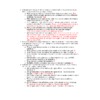 |
|
Lecture Notes | Approved: 4 years ago | 41.83 kB | Comments: 0
...many different antibody molecules. True c. MHC...
...by the MHC molecules expressed by an...
...a. All Ig molecules on the surface...
...b. All Ig molecules on the surface...
...All myeloma protein molecules derived from a...
...of the Ig molecules on a single...
...each of the molecules you describe. See...
...HLA-B, and HLA-C molecules on the surface...
...True...all class I molecules use beta-2 microglobulin....
...class II MHC molecules on their membranes....
...Class II MHC molecules typically bind to...
...class I MHC molecules. True (pita versus...
...class I MHC molecules. False...most nucleated cells....
...and class II molecules are derived from...
...located in MHC molecules? What is the...
| N/A |
55
|
farhan ali
|
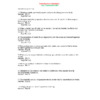 |
|
Solutions | Approved: 6 years ago | 20.16 kB | Comments: 0
...Both carbon dioxide molecules and water molecules...
...molecules and water molecules consist of three...
...Ref: 1.1 6) Molecules are responsible for...
...7) Atoms and molecules determine how matter...
...dioxide. B) The molecules important to fizzing...
...what atoms and molecules do. B) the...
...by studying the molecules that make up...
...studying interactions of molecules with atoms. D)...
...the interactions of molecules for the sake...
...the atoms and molecules that compose them....
| N/A |
162
|
tjeff20161982
|
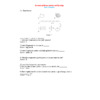 |
|
Solutions | Approved: 6 years ago | 70.22 kB | Comments: 0
...organic 11) Polar molecules, like water, result...
...units: A) water molecules must be added...
...bond B) water molecules must be removed...
...bond E) water molecules and carbon atoms...
...form more complex molecules through: A) synthesis...
...bonding between water molecules is responsible for:...
...broken, and simpler molecules are formed. In...
...water. Answer: Water molecules are added to...
...of large organic molecules. When water is...
...interacts with other molecules must be intact...
...constructed of glucose molecules linked together by...
...has many glucose molecules bonded together. 13)...
| N/A |
152
|
tjeff20161982
|
 |
|
Solutions | Approved: 6 years ago | 160.81 kB | Comments: 0
...in bonds in molecules being broken and...
...represent(s) only diatomic molecules? A. ...
...best represent(s) only molecules? A. ...
...E. IV only Molecules have multiple atom...
...nitrogen are diatomic molecules as found in...
...2 × 1022 molecules and atoms in...
...how many CO molecules are in each...
...particles (atoms and molecules), how many particles...
...that may be molecules. C. is of...
...prefixes for naming molecules. 75. Which...
| N/A |
160
|
tjeff20161982
|
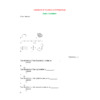 |
|
Solutions | Approved: 6 years ago | 190.22 kB | Comments: 0
...organic 11) Polar molecules, like water, result...
...units: A) water molecules must be added...
...bond B) water molecules must be removed...
...bond E) water molecules and carbon atoms...
...sugar and phosphate molecules that form uprights...
...solvent in specialized molecules that lubricate the...
...of large biological molecules. Water is added...
...of the larger molecules in specific reactions...
...broken, and simpler molecules are formed. In...
...water. Answer: Water molecules are added to...
...of large organic molecules. When water is...
...interacts with other molecules must be intact...
...interact with other molecules of complementary shape...
...a compound. Answer: Molecules are formed when...
| N/A |
118
|
tjeff20161982
|
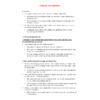 |
|
Lecture Notes | Approved: 6 years ago | 39.7 kB | Comments: 0
...to construct organic molecules. A. Nutritional Requirements...
...of their own molecules). Essential nutrients, substances...
...of organic fuel molecules— carbohydrates, proteins, and...
...any excess fat molecules obtained from food...
...storage of high-energy molecules during feasts to...
...variety of organic molecules - carbohydrates, proteins,...
...Vitamins are organic molecules required in the...
...complex arrays of molecules, including large polymers...
...food down into molecules small enough for...
...make its own molecules or as fuel...
...take up small molecules such as amino...
...hydrolyze the food molecules, and nutrients are...
...activate more pepsinogen molecules. The stomach’s second...
...into two glucose molecules. Sucrase splits sucrose,...
...undigested. Normally fat molecules are insoluble in...
...that hydrolyzes fat molecules into glycerol, fatty...
...is passive, as molecules move down their...
...interconvert various organic molecules—has first access to...
| N/A |
149
|
johaneswijaya
|
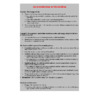 |
|
Lecture Notes | Approved: 6 years ago | 44.93 kB | Comments: 0
...living cell. Small molecules are assembled into...
...from interactions between molecules within the orderly...
...breaking down complex molecules to simpler compounds....
...to build complicated molecules from simpler compounds....
...acids from simpler molecules and the synthesis...
...of atoms or molecules. Heat is the...
...above sea level. Molecules possess energy because...
...form of organic molecules—and release heat and...
...of atoms and molecules. A system can...
...animal consumes organic molecules as food and...
...store energy in molecules; G is positive....
...form of organic molecules. Concept 8.3 ATP...
...10 million ATP molecules are consumed and...
...and reform, reactant molecules must absorb energy...
...of the product molecules form, energy is...
...heat as the molecules assume stable shapes...
...that the reactant molecules absorb from the...
...accelerates the reactant molecules, which then collide...
...atoms within the molecules, making the breakage...
...likely. When the molecules have absorbed enough...
...of two reactant molecules: AB + CD...
...of the reactant molecules increasing. At the...
...energy by the molecules. As the molecules...
...molecules. As the molecules settle into new,...
...other complex organic molecules are rich in...
...majority of organic molecules to make it...
...stretch the substrate molecules toward their transition-state...
...add more enzyme molecules. A cell’s physical...
...more frequently as molecules move more rapidly....
...reactants to product molecules. Most human enzymes...
...active site. These molecules are called competitive...
...are metabolic poisons. Molecules naturally present in...
...allosteric regulation. Many molecules that naturally regulate...
...way. Allosteric regulatory molecules tend to bind...
...kinds of cellular molecules. ...
| N/A |
140
|
johaneswijaya
|
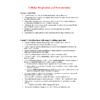 |
|
Lecture Notes | Approved: 6 years ago | 44.06 kB | Comments: 0
...oxygen and organic molecules that the mitochondria...
...stored in organic molecules and use it...
...in complex organic molecules. Electron transfer plays...
...degradation of organic molecules that are rich...
...variety of organic molecules. Most eukaryotic and...
...stored in food molecules, releasing energy that...
...work. Organic fuel molecules are oxidized during...
...glucose and other molecules in food, is...
...is released. Organic molecules that contain an...
...bonds of these molecules are a source...
...with hydrogen. These molecules are stable because...
...consists of several molecules (primarily proteins) built...
...to increasingly electronegative molecules in the chain...
...glucose into two molecules of pyruvate. In...
...to form two molecules of pyruvate, the...
...oxidation of organic molecules More than three-quarters...
...in the two molecules of pyruvate. If...
...pyruvate. Three CO2 molecules are released, including...
...a collection of molecules embedded in the...
...gradient. ATP synthase molecules are the only...
...glucose to six molecules of CO2. Four...
...CO2. Four ATP molecules are produced by...
...Many more ATP molecules are generated by...
...number of ATP molecules generated by one...
...to two pyruvate molecules, with NAD+ as...
...fermentation—up to 32 molecules of ATP for...
...compared with 2 molecules of ATP produced...
...variety of organic molecules can be used...
...beta oxidation. These molecules enter the citric...
...make their own molecules. Some organic monomers...
...can synthesize the molecules it requires. For...
...diversion of intermediary molecules from the citric...
...sparing valuable organic molecules for other functions....
...to replace these molecules. Metabolic balance is...
| N/A |
188
|
johaneswijaya
|
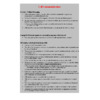 |
|
Lecture Notes | Approved: 6 years ago | 44.36 kB | Comments: 0
...that ancestral signaling molecules evolved long ago...
...species secrete small molecules that can be...
...concentration of signaling molecules enables bacteria to...
...organisms release signaling molecules that target other...
...between membrane-bound cell-surface molecules. Such cell-cell recognition...
...cell secretes messenger molecules. Some transmitting cells...
...secretion of neurotransmitter molecules carrying a chemical...
...chemical signal. The molecules diffuse across a...
...series of different molecules along a signal...
...transduction pathway. The molecules in the pathway...
...are called relay molecules. 3. In response,...
...interact with other molecules. For other receptors,...
...aggregation of receptor molecules, leading to further...
...are large, water-soluble molecules that are too...
...proteins. Water-soluble signaling molecules bind to specific...
...many different signal molecules, including yeast mating...
...specific phosphorylated tyrosine molecules. One tyrosine-kinase receptor...
...For example, neurotransmitter molecules released at a...
...of cell-surface receptor molecules are associated with...
...that contain receptor molecules for testosterone respond....
...to the signal molecules there. Many intracellular...
...receptors to target molecules in the cell...
...signal. If some molecules in a pathway...
...signal to multiple molecules at the next...
...number of activated molecules at the end...
...activated. The relay molecules that relay a...
...of the relay molecules in a signal...
...between active kinase molecules and active phosphatase...
...and active phosphatase molecules. When the extracellular...
...absent, active phosphatase molecules predominate, and the...
...down. Certain signal molecules and ions are...
...small, water-soluble, nonprotein molecules or ions called...
...and other signal molecules trigger the formation...
...penis. Many signaling molecules in animals, including...
...receptors and relay molecules participate in a...
...number of epinephrine molecules can lead to...
...millions of glucose molecules. Various types of...
...may have some molecules in common. Cells...
...of large relay molecules such as proteins,...
...Binding of signal molecules to receptors must...
...concentration of signaling molecules declines, fewer receptors...
...with bound signaling molecules is above a...
...means, the relay molecules return to their...
| N/A |
149
|
johaneswijaya
|
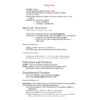 |
|
Lecture Notes | Approved: 6 years ago | 68.91 kB | Comments: 0
...Break down complex molecules into simpler ones...
...are relatively large molecules made of proteins...
...broken and the molecules in the enzyme...
...number of enzyme molecules and therefore the...
...energy to the molecules involved. The numbers...
...reversible inhibitors: These molecules have a similar...
...reversible inhibitors: These molecules are not necessarily...
...Irreversible inhibitors: These molecules bind permanently with...
...stains into smaller molecules that are not...
| N/A |
144
|
johaneswijaya
|
|
Post your homework questions and get free online help from our incredible volunteers
|